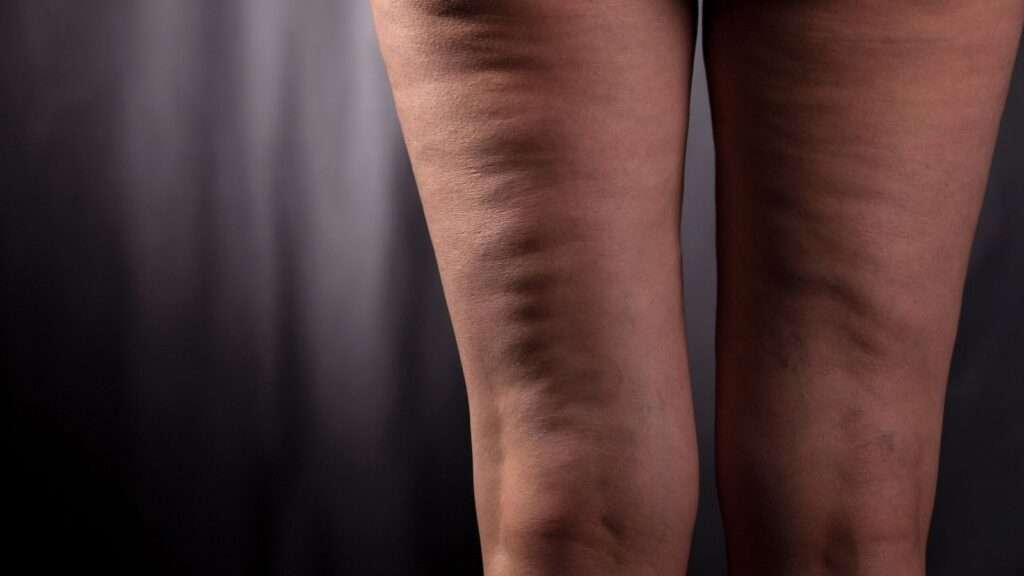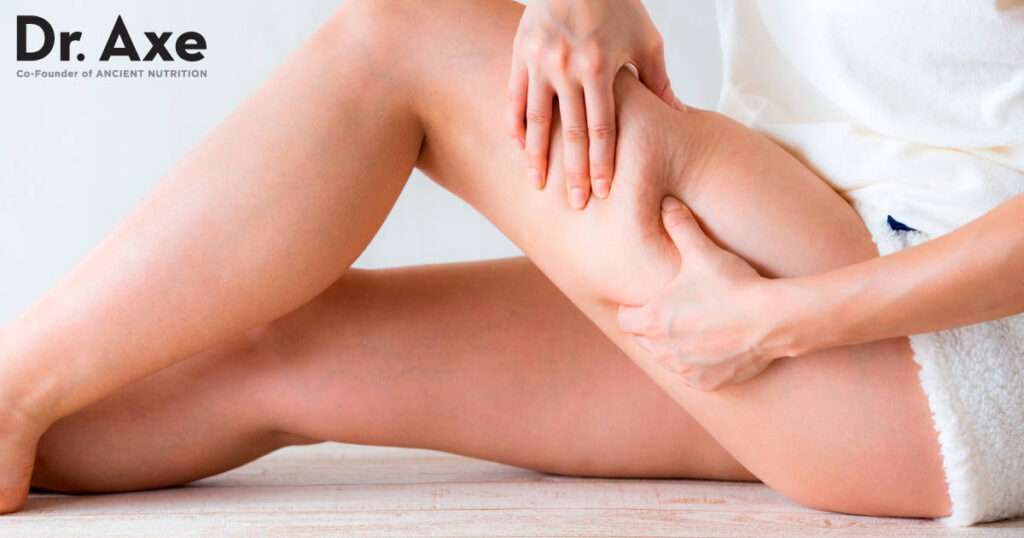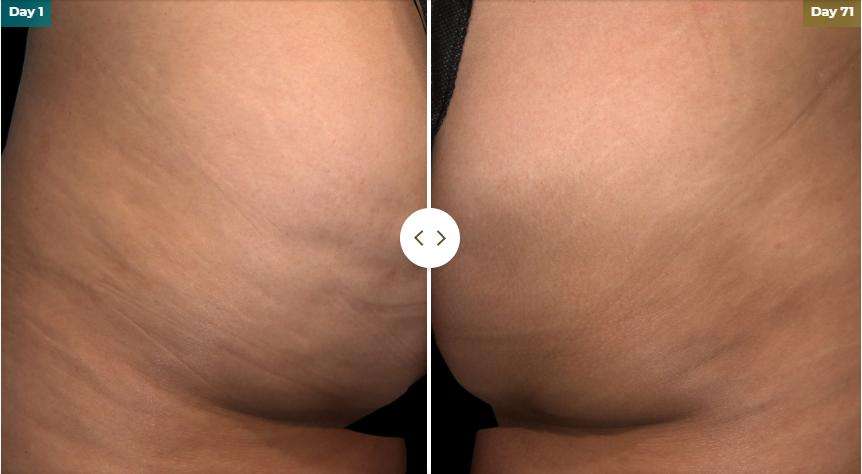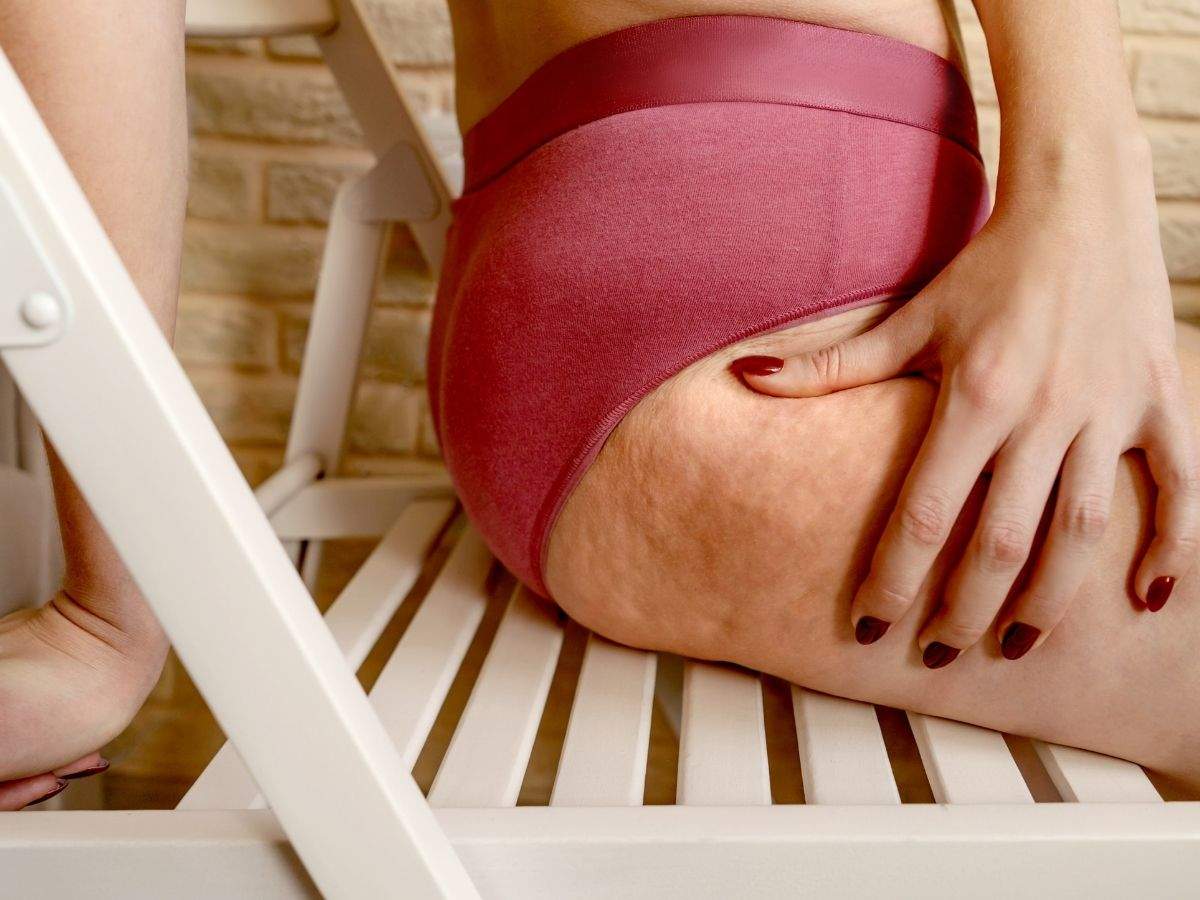Are you tired of dealing with the frustrating appearance of cellulite and constant back pain? You’ve probably heard countless solutions and remedies, but have you ever considered shedding those extra pounds? In this article, we will explore the correlation between weight loss and the reduction of cellulite and back pain. Is losing weight the secret remedy you’ve been searching for? Let’s find out.

The Relationship Between Weight Loss and Cellulite
Understanding what cellulite is
Cellulite is a common condition that affects many people, particularly women. It is characterized by the appearance of dimpled, lumpy skin, usually in areas such as the thighs, buttocks, and hips. Contrary to popular belief, cellulite is not directly related to weight or body fat percentage. It is actually caused by the structure of fat cells and connective tissue beneath the skin. These fat cells push against the connective tissue, resulting in the characteristic dimpled appearance.
Factors that contribute to cellulite
While weight is not the sole determinant of cellulite, it is still a contributing factor. Other factors such as genetics, hormonal changes, a sedentary lifestyle, poor circulation, and a high-stress lifestyle can also play a role. Generally, individuals with a higher body fat percentage may have a higher likelihood of developing cellulite, as the excess fat can exacerbate the appearance of dimples. However, it is important to note that even individuals with a healthy weight and body fat percentage can still have cellulite due to other contributing factors.
How weight loss affects cellulite
Weight loss can have a positive impact on the appearance of cellulite, but it may not completely eliminate it. When you lose weight, the fat cells beneath the skin shrink, which reduces the pressure they exert on the connective tissue. This can lead to a reduction in the visible dimples. However, it is important to note that cellulite may not completely disappear, especially if other contributing factors are still present. Nevertheless, weight loss can improve the overall appearance of cellulite and boost self-confidence.
The role of exercise in reducing cellulite
Exercise plays a crucial role in reducing the appearance of cellulite. It helps to improve circulation, tone muscles, and burn excess fat. Cardiovascular exercises such as running, cycling, and swimming can help to burn calories and reduce overall body fat. Strength training exercises, on the other hand, can help to build muscle and firm up the underlying tissue, reducing the visibility of cellulite. Additionally, targeted exercises that focus on specific problem areas such as lunges, squats, and leg lifts can further help to tone and tighten the muscles, reducing the appearance of cellulite.
The Connection Between Weight Loss and Back Pain
Causes of back pain
Back pain is a common ailment that can impact individuals of all ages. It can be caused by a variety of factors, including poor posture, muscle imbalances, spinal conditions, and injuries. Some individuals may also experience back pain as a result of excess weight or obesity. Poor body mechanics and the increased load placed on the spine can contribute to strain and discomfort in the back.
The impact of excess weight on the spine
Carrying excess weight can significantly impact the spine and increase the risk of back pain. The spine is responsible for supporting the body’s weight and maintaining proper alignment. When you carry excess weight, it places additional stress and pressure on the spine, particularly in the lower back. This can lead to muscle imbalances, spinal misalignment, and increased compression on the spinal discs, all of which can contribute to back pain.
Weight loss as a potential solution for back pain
Weight loss can be a potential solution for reducing back pain caused by excess weight. By shedding pounds, you can alleviate the stress and strain on the spine, allowing it to function more efficiently. As you lose weight, the pressure on the spinal discs decreases, reducing the risk of disc herniation and nerve compression. Additionally, weight loss can improve muscle strength and balance, which is essential for supporting the spine and maintaining proper posture.
Exercises to alleviate back pain
Incorporating specific exercises into your fitness routine can help to alleviate back pain. Low-impact exercises such as swimming, walking, and cycling can help to strengthen the muscles that support the spine without placing excessive strain on the back. Stretching exercises such as yoga or Pilates can also help to improve flexibility and relieve tension in the muscles, providing relief for back pain. It is important to consult with a healthcare professional or a qualified personal trainer to ensure that you are performing the exercises correctly and safely.
The Importance of a Healthy Diet
Nutrition and its effect on cellulite
Maintaining a healthy diet is crucial for overall well-being and can also have an impact on the appearance of cellulite. A diet that is high in fruits, vegetables, lean proteins, and whole grains can provide the body with essential nutrients and antioxidants that help to improve skin health and collagen production. Collagen is a protein that is responsible for the elasticity and structure of the skin. By consuming a diet rich in collagen-promoting foods, you can help to reduce the appearance of cellulite and improve the overall health of your skin.
Foods that may worsen cellulite
Certain foods may contribute to the development or worsening of cellulite. Highly processed foods, sugary snacks, and excessive salt intake can lead to inflammation in the body and contribute to cellulite formation. Foods that are high in saturated and trans fats, such as fried foods and processed meats, can also impair circulation and contribute to the appearance of cellulite. It is important to minimize the consumption of these foods and focus on a balanced diet consisting of whole, nutrient-dense foods.
Nutrition for weight loss and back pain relief
A healthy diet is essential for both weight loss and back pain relief. By consuming a balanced diet that is rich in fruits, vegetables, lean proteins, and whole grains, you can provide your body with the necessary nutrients for weight loss and muscle recovery. Adequate protein intake is particularly important for building and repairing muscle tissues, which can improve muscle strength and alleviate back pain. Additionally, consuming foods that are high in anti-inflammatory properties, such as fatty fish, nuts, and leafy greens, can help to reduce inflammation in the body, which may contribute to back pain.
The role of hydration in reducing cellulite and back pain
Staying hydrated is crucial for maintaining overall health and can also have a positive impact on cellulite and back pain. Drinking an adequate amount of water can help to flush out toxins from the body, improve circulation, and keep the skin hydrated and plump, which can reduce the visibility of cellulite. Additionally, proper hydration is essential for maintaining the elasticity of spinal discs, which can alleviate back pain.
Exercise and its Impact on Cellulite and Back Pain
Incorporating cardio exercises
Cardiovascular exercises are an important component of any fitness routine, especially when it comes to reducing cellulite and managing back pain. Cardio exercises help to burn calories and excess fat, which can contribute to reducing overall body fat and improving the appearance of cellulite. Engaging in activities such as running, swimming, dancing, or cycling can help to increase your heart rate and promote weight loss, while also improving cardiovascular health and circulation.
Strength training to target problem areas
In addition to cardio exercises, incorporating strength training into your fitness routine is crucial for reducing cellulite and managing back pain. Strength training exercises help to build lean muscle mass, which can increase metabolism and calorie burning even at rest. By targeting specific problem areas such as the thighs, buttocks, and core, you can tone and tighten the muscles, reducing the appearance of cellulite and providing support for the spine. Incorporating exercises such as squats, lunges, deadlifts, and planks can help to strengthen these areas and alleviate back pain.
Exercises specifically for back pain relief
There are specific exercises that can target the muscles of the back and provide relief for back pain. Strengthening exercises such as back extensions, bridges, and rows can help to improve muscle strength and stability, reducing the strain on the spine. Stretching exercises such as cat-cow, child’s pose, and spinal twists can help to improve flexibility and relieve tension in the back muscles. It is important to consult with a healthcare professional or a qualified personal trainer to determine the appropriate exercises for your specific condition and to ensure proper form and technique.
Finding a balance between exercise and recovery
While exercise is important for reducing cellulite and managing back pain, it is equally important to allow your body time to recover. Overtraining or pushing yourself too hard can lead to increased inflammation, muscle imbalances, and potential injuries. It is important to listen to your body and give yourself rest days between workouts. Incorporating recovery exercises such as yoga, stretching, and foam rolling can help to improve flexibility, reduce soreness, and promote optimal recovery.
Body Mass Index (BMI) and its Relevance
Understanding Body Mass Index (BMI)
Body Mass Index, or BMI, is a measurement that is commonly used to assess whether an individual’s weight is within a healthy range. It is calculated by dividing an individual’s weight in kilograms by their height in meters squared. BMI provides a general estimation of body fat percentage and is often used as a screening tool to identify individuals who may be at risk for weight-related health conditions.
BMI and its relation to cellulite
Body Mass Index is not directly related to the development or severity of cellulite. As mentioned earlier, cellulite is caused by a combination of factors, including the structure of fat cells, connective tissue, genetics, and lifestyle factors. While individuals with a higher BMI may have a higher likelihood of having excess body fat, it does not necessarily mean they will have more severe cellulite. Even individuals with a healthy BMI can still have cellulite due to other contributing factors.
BMI and its relation to back pain
Body Mass Index can have an impact on back pain, particularly in individuals who are overweight or obese. Excess weight places additional stress on the spine, can lead to poor posture, muscle imbalances, and increased compression on the spinal discs, all of which can contribute to back pain. Maintaining a healthy BMI can help to alleviate these factors and reduce the risk of developing or worsening back pain.
Setting realistic weight loss goals based on BMI
When embarking on a weight loss journey, it is important to set realistic goals based on your BMI. Aiming for a healthy BMI range is a good starting point, but it is also important to consider factors such as muscle mass, body composition, and overall health. It is recommended to consult with a healthcare professional or a registered dietitian to determine a suitable weight loss goal based on your individual circumstances and health needs.
Lifestyle Changes for Cellulite Reduction and Back Pain Relief
Maintaining a consistent exercise routine
To reduce cellulite and manage back pain effectively, it is important to maintain a consistent exercise routine. Incorporating a combination of cardiovascular exercises, strength training, and targeted exercises for problem areas can help to improve overall muscle tone, reduce body fat, and enhance circulation. Consistency is key when it comes to achieving long-term results, so it is important to find activities that you enjoy and can commit to on a regular basis.
Implementing a well-balanced diet
A well-balanced diet is essential for both cellulite reduction and back pain relief. Consuming a variety of nutrient-dense foods, such as fruits, vegetables, lean proteins, whole grains, and healthy fats, can provide the necessary nutrients for optimal health and weight management. It is also important to be mindful of portion sizes and limit the consumption of processed and sugary foods, which can contribute to inflammation and weight gain.
Minimizing stress and its impact on cellulite and back pain
High levels of stress can contribute to the development and worsening of cellulite and back pain. Stress triggers the release of hormones that can impair circulation, promote inflammation, and lead to weight gain. Incorporating stress management techniques such as meditation, deep breathing exercises, yoga, or engaging in hobbies and activities that promote relaxation can help to reduce stress levels, improve overall well-being, and potentially alleviate the symptoms of cellulite and back pain.
Improving posture and its effect on back pain
Poor posture can contribute to back pain and affect the appearance of cellulite. Slouching or sitting for prolonged periods can put strain on the muscles and ligaments of the back, leading to discomfort and a higher risk of injury. Practicing good posture by sitting and standing upright, engaging the core muscles, and using ergonomic furniture can help to alleviate back pain and improve overall body alignment. This, in turn, can positively impact the appearance of cellulite by promoting proper circulation and reducing tension in the connective tissue.

Non-Surgical Treatments for Cellulite and Back Pain
Topical creams and lotions
Topical creams and lotions are commonly used as non-surgical treatments for cellulite. These products often contain ingredients such as caffeine, retinol, and antioxidants, which can help to temporarily improve the appearance of cellulite by stimulating blood flow, promoting collagen production, and reducing inflammation. While these products may provide temporary results, they are not a permanent solution and must be used consistently to maintain their effects.
Massage and cellulite reduction
Massage therapy is another non-surgical treatment that is often used for cellulite reduction. Techniques such as lymphatic drainage massage, deep tissue massage, and cellulite massage can help to improve circulation, reduce fluid retention, and promote the breakdown of fatty tissue. Regular massage sessions, combined with a healthy lifestyle, can help to improve the appearance of cellulite and provide relief for associated symptoms.
Physical therapy for back pain management
Physical therapy is a non-surgical treatment option for back pain management. A physical therapist can assess your condition, provide targeted exercises and stretches, and help to improve posture and body mechanics. Physical therapy can also include modalities such as heat therapy, cold therapy, ultrasound, and electrical stimulation, which can help to reduce inflammation, alleviate pain, and promote healing.
Alternative treatments to consider
In addition to traditional non-surgical treatments, there are alternative therapies that may be considered for cellulite and back pain relief. These include acupuncture, dry needling, cupping therapy, and herbal remedies. It is important to consult with a healthcare professional or a qualified practitioner to determine the suitability and effectiveness of these treatments for your specific condition.
Seeking Professional Guidance
Consulting with a nutritionist
If you are struggling with weight loss, cellulite, or back pain, it can be beneficial to consult with a nutritionist. A nutritionist can assess your dietary habits, provide personalized guidance, and help you develop a nutrition plan that supports your goals. They can also provide education on portion sizes, meal planning, and food choices that can help to improve your overall health and well-being.
Working with a personal trainer
Working with a personal trainer can be beneficial for individuals looking to lose weight, reduce cellulite, or manage back pain. A personal trainer can design a customized exercise program that takes into account your specific needs and goals. They can provide guidance on proper form and technique, motivate you to stay on track, and monitor your progress. A qualified personal trainer can also provide modifications and adaptations to exercises to accommodate any existing injuries or physical limitations.
Seeking medical advice for severe cellulite or back pain
If you are experiencing severe cellulite or back pain that is affecting your quality of life, it is important to seek medical advice. A healthcare professional, such as a dermatologist or orthopedic specialist, can assess your condition, provide a proper diagnosis, and recommend appropriate treatment options. They can also refer you to other healthcare professionals, such as physical therapists or registered dietitians, for comprehensive care.
Exploring specialized treatments under professional supervision
In some cases, specialized treatments may be recommended for severe cellulite or back pain. These treatments may include procedures such as laser therapy, radiofrequency treatments, or minimally invasive interventions for cellulite reduction. For back pain, treatments such as chiropractic adjustments, spinal decompression therapy, or epidural injections may be considered. It is important to consult with a qualified healthcare professional who can provide guidance and ensure that these treatments are appropriate for your specific condition and needs.

Maintaining Results and Preventing Recurrence
Sustaining a healthy weight to prevent cellulite reappearance
To prevent the reappearance of cellulite, it is important to sustain a healthy weight. This can be achieved by maintaining a balanced diet, engaging in regular exercise, and adopting a healthy lifestyle. It is important to remember that cellulite may still be present even at a healthy weight, but maintaining a healthy lifestyle can help to minimize its appearance and optimize overall health.
Exercises and lifestyle habits for long-term back pain relief
To prevent the recurrence of back pain, it is important to incorporate exercises and lifestyle habits that promote spinal health. This includes maintaining good posture, engaging in regular exercise to strengthen the supporting muscles, and avoiding prolonged periods of sitting or standing. It is also important to lift heavy objects properly, use ergonomic furniture, and take breaks to stretch and move during sedentary activities.
Preventing future weight gain and back pain
Preventing future weight gain is essential for reducing the risk of both cellulite and back pain. Adopting a healthy lifestyle that includes regular exercise, a balanced diet, and stress management techniques can help to maintain a healthy weight and prevent the development or worsening of these conditions. By making sustainable lifestyle changes, you can reduce the risk of recurrence and improve your overall well-being.
Regular monitoring and self-care practices
Regular monitoring of your weight, cellulite, and back pain can help you stay on track and identify any changes or concerns. It can be beneficial to keep a journal or track your measurements to monitor progress. Additionally, practicing self-care techniques such as regular stretching, foam rolling, getting quality sleep, and managing stress can all contribute to long-term results and overall well-being.
Conclusion
In conclusion, while weight loss alone may not be a cure-all for cellulite and back pain, it can have a positive impact on both conditions. By shedding pounds, improving muscle tone, following a healthy diet, and adopting a holistic approach, you can reduce the appearance of cellulite and alleviate back pain. It is important to remember that individual results may vary, and it is always advisable to consult with healthcare professionals for personalized guidance and treatment options. By prioritizing overall well-being and making sustainable lifestyle changes, you can achieve the best possible outcomes for your cellulite reduction and back pain relief journey.


